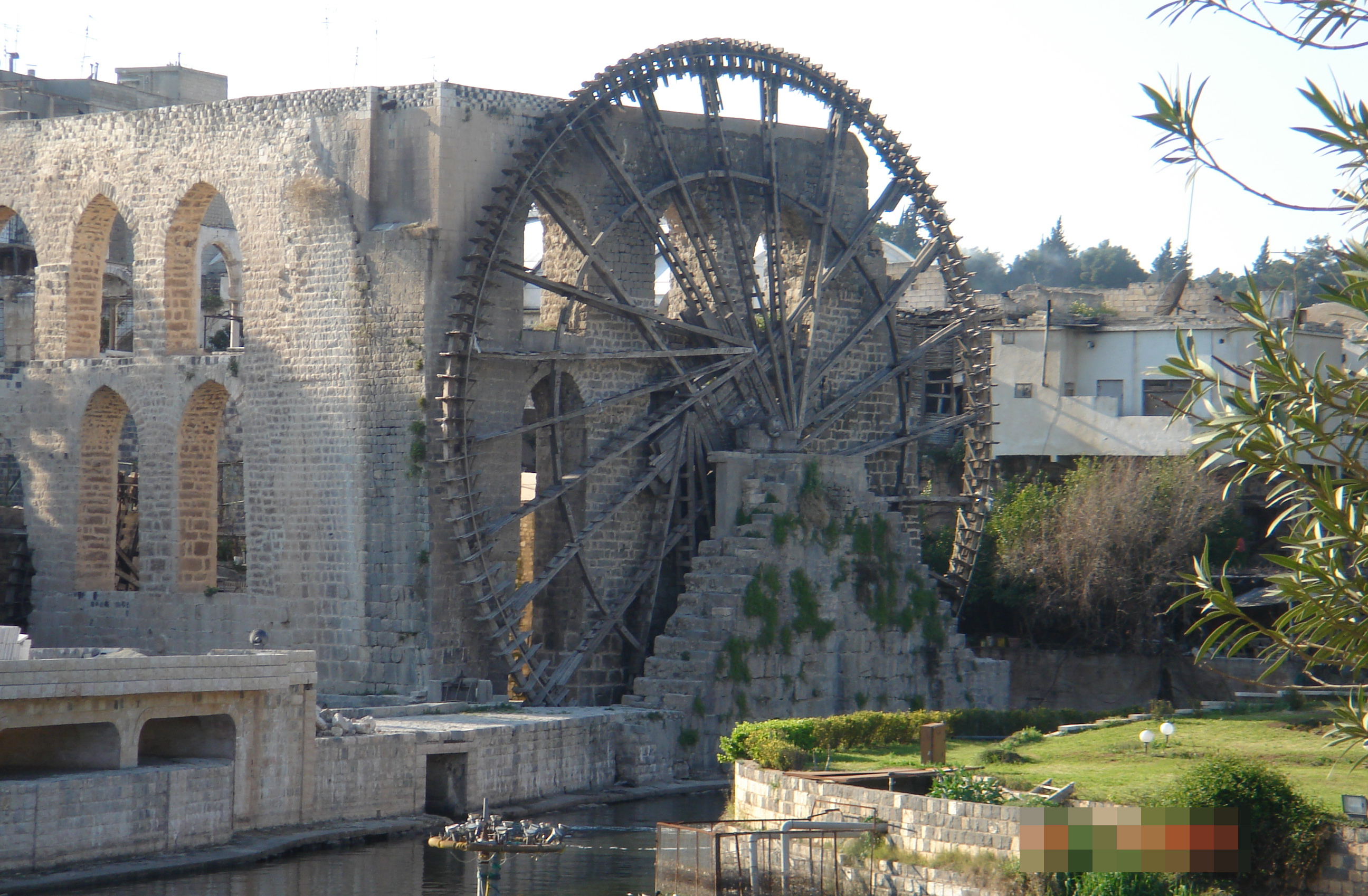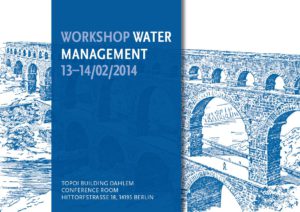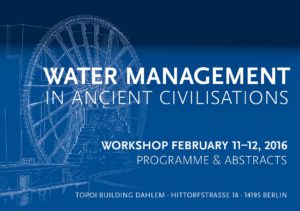The research objective of A-3-1was the investigation of ancient or historical water management. Water management turned out to be a very fruitful object in the sense of a “bridge topic” between environmental, archeological and social sciences, which is also high on recent political agendas and in academia. The primary goal of the project was to evaluate “water management” in its different applications and understandings at various time- and spatial scales. The junior research group “Water Management” was anchored in this research project. The work was carried out in close cooperation with Areas A-D.
Research
A theoretical background to describe the complex patterns between the natural environmental conditions and societal organization as well as technical knowledge needed to perform water management, lead to the categorization of water management into three main dimensions, which are:
A / water availability
B / water technology
C / social organization

Waterwheel (Naura) in Hama, Syria (Foto: public domain)
A / Water availability herein refers to all natural water sources. The primary source is precipitation and subsequent surface- and groundwater runoff. It is important to note, that the specific climatic conditions, the hydrological regimes and the landscape- or catchment characters, make water availability a dynamically changing and manifold process. (Projects dealing with this: (A-3-2) Water management in the western Mediterranean region and (A-3-5) Functionality and effectiveness of technical water-management measures).
B / Water technology refers to all technical measures of water management. Specifically these are:
- wells and springs
- open and closed canals
- open and closed reservoirs
- temporal and permanent dams as well as
- water lifting devices (Projects dealing with this: (A-3-3) Mapping of water technology and (A-3-8) The water clock – a case study in the origin of time measurement).
C / The social organization with respect to water management refers to the type in which water is shared, provided or used among individuals or groups. Often societies develop(ed) special governance structures to regulate the resource water. (Projects dealing with this: (A-3-4) Water from a legal perspective, (A-3-6) Water Management of Mesopotamia in the 3rd Millenium BC, (A-3-7) Water Management of Ancient Cities on Sicily)
“Water supply” and “irrigation strategies” turned out to be the original drivers of earliest water management, especially in drylands and at least since the Bronze Ages. However, not only to improve settlement conditions but also many other functions of water and water management evolved with time and added to the manifold spectrum of water use. These are: fresh water (domestic, drinking, tap and portable water), food production (water for irrigation and animal husbandry), fishery, navigation (transport), cult, energy (hydropower), status (political power), hygiene and for the purpose of entertainment, protection, cooling and recreation.
This very broad agenda of water in all its forms and applications was discussed, presented and published by many researchers from different disciplines at several occasions. Two highlights certainly were the workshops Water Management (13.2.2014 – 14.2.2014) and Water Management in Ancient Civilisations (11.2.2016 – 12.2.2016 ).
More detailed information on lectures and publications can be found at: Water Management (Key Topic/Junior Research Group).


